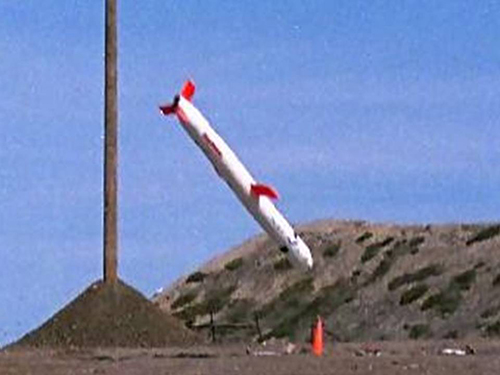- Home >
- Directorates >
- Materiel Test
Materiel Test Directorate

The Materiel Test Directorate (MT) provides evaluation of systems, materiel and equipment through field, and laboratory testing on WSMR for sponsored DoD, foreign, space and industry customers. Throughout its history, MT has tested a wide variety of hardware, including U.S. and foreign systems. Among these are air defense missile systems including Stingers, Terminal High Altitude Area Defense (THAAD) interceptors, Patriots/Patriot Advanced Capability-3's (PAC-3), surface-to-surface rocket/missile systems including Multiple Launch Rocket Systems (MLRS) and its variants (guided and unitary), High Mobility Artillery Rocket Systems (HIMARS), Army Tactical Missile Systems (ATACMS) and various unmanned aerial vehicles.
Complex System Testing
The testing of today's complex systems continues to dominate the MT workload. A typical test program will include several components: the review of system performance requirements; the development of detailed test plans; tests ranging from component, subsystem and system to software verification; validation of human factor assessments; and finally, the firing of rockets and missiles.
At each testing step, data are collected and analyzed. Finally, overall assessments are made to assure systems are ready for the Soldiers in the field. To accomplish the complex task of testing, a core team consisting of a project engineer, systems analyst and test conductor is formed. The project engineer is the focal point for all project-related test activities. He or she is responsible for planning, coordinating, executing and reporting test results and associated data analysis. The test conductor is responsible for accomplishing the test program and for directing the actual test efforts.
System Analysis
A key activity in the successful development and execution of an effective test program is system analysis. Systems analysts are assigned to each project to develop and implement a comprehensive test and evaluation program. Throughout a given program, analysts review the test requirements, develop detailed test plans and monitor the collection of data during test and simulation activities. Upon completion of the test program, results are assembled to quantify the system's performance. These assessments, along with data accuracy and confidence-level quality indicators, are presented in final test reports.
Explosive Testing
Explosive testing capabilities include facilities for safety tests such as fire, drop, bullet impact, sympathetic detonation and others. Warhead arena tests, warhead penetration tests and failure analysis of explosive components are also available. Maximum data collection for failure analysis on lethal weapon systems and submunitions can be conducted remotely using a robotic Remote Area Disassembly Vehicle (RADV).
Performance
In addition to controlled environment testing, the actual operation of the system is tested, which in many cases involves the launching of a rocket or missile. Reliability, availability and maintainability (RAM) information, including MANPRINT factors and safety data, is collected and evaluated during these tests. MT provides knowledgeable reliability engineers and equipment specialists to develop test methodology and to plan customer reliability and maintainability test programs. Test data from the programs are processed in the Army Test and Evaluation Command (ATEC) Standard Data Collection System (SDCS) and provide test incident reports to assess overall system performance. These performance parameters indicate utility and effectiveness of the system so MT can assure the best possible systems are fielded.
For systems with embedded software, a unique requirement-oriented software assessment methodology targeted at the system performance level can be applied. The approach is focused at the software's requirement level and deliberately avoids further debugging of the contractor's computer code. Simulation techniques are available for evaluation of systems under test.
Mathematical models of systems, subassemblies and major components can be assembled and executed on digital computer systems. The results of simulations can be used in determining range safety boundaries, pre-flight and post-flight analysis, environmental effects on system functions and overall system performance in preparation for live firings.
Technical Testing
MT has experience in a variety of other technical activities that are test related. Some examples include supporting the systems engineering process, performing software independent verification and validation, monitoring developer (contractor) testing, assisting in establishing the extent to which simulation could/should be used, assisting in the verification and validation of simulations, and assisting in the identification of data collection and data reduction requirements.
When appropriate, MT coordinates requirements with the Range Operations Directorate to conduct live rocket or missile firings. This coordination determines the launch and impact site , the use of targets, and the type and accuracy of data required.
